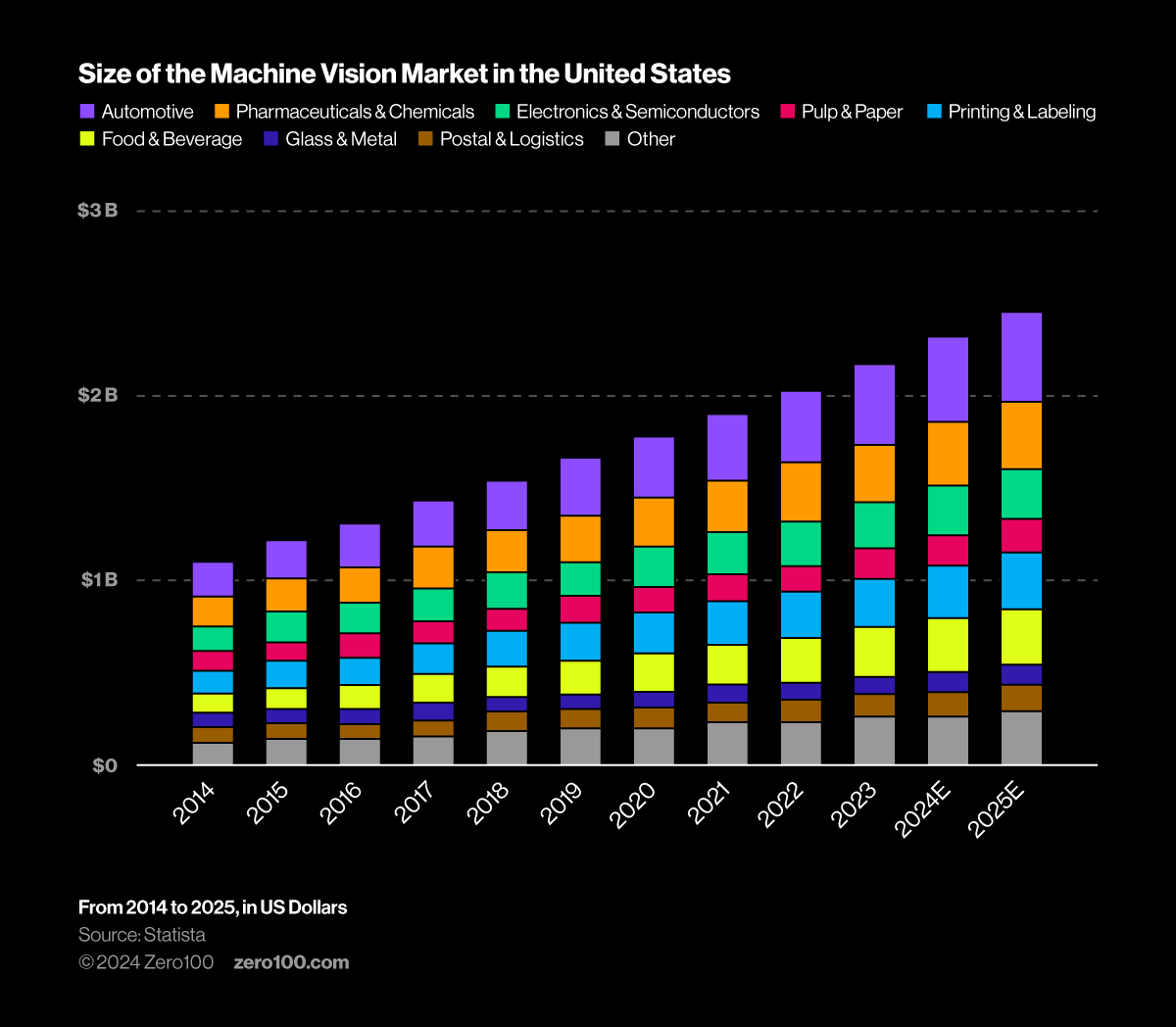
UVeye and the Future of Machine Vision in Supply Chain
Many supply chain problems are about recognition and expertise based primarily on vision. Machine vision has the power to not only solve these problems but transform business altogether – if only we think bigger and more broadly about what is possible.
A recent Miami news broadcast included a segment featuring interviews with the manager and several customers at a local Toyota dealership. All were gushing about a new system able to complete a detailed 360-degree inspection of a car in seconds. The system’s maker, UVeye, is an Israeli company that got started using underbody cameras and AI to check vehicles for bombs.
The fact that this story made the editor’s cut alongside local traffic and weather says a lot about the maturity of AI and machine vision. It’s here to stay, and it’s amazing.
Scaling Recognition and Expertise by Thousands
In 2016, at an SCM World conference in Dublin, Dave Clark, then-SVP of Worldwide Operations for Amazon, gave a mind-blowing presentation on supply chain technology. When asked by an audience member about the edge of innovation in robotics, he focused on machine vision, saying it was often overlooked but central to the advances Amazon was making in warehouse automation.
Related stories from Unilever about using satellite imagery to deal with deforestation in its palm oil supply, or Land O’Lakes using drones to identify crop stress across thousands of acres of farmland, or Walmart using AI to scout produce aisles for overripe fruit are not new. And yet, with AI permeating supply chain strategy these days, maybe it’s time to think bigger about machine vision as a transformative technology.
The first video recorder was invented in 1951 and initially sold for $50,000. For decades, the total number of video cameras worldwide grew, but only into the millions. Today, with cameras in seven billion smartphones plus millions of CCTV cameras, the total volume of digital image data in existence is at least 10,000 times greater than what it was in 2007 when the iPhone was introduced – and it's still growing fast.
Google Photo, an AI-powered app on my Pixel 7 phone, is so good at recognizing my wife that it automatically recognizes not only every image of her from any distance or angle but also whether she’s working, traveling, or partying. I have thousands of pictures, comprising a training data set that is cross-referenced with millions of other peoples’ data sets, which together make it possible to automatically generate fantastic collections of themed images. Without any direct human involvement, Google Photo’s AI is an expert in my life, able to recognize and organize meaning better than I can myself.
By combining the explosion in image capture with improvements in machine learning, supply chain practitioners can exponentially magnify their expertise with machine vision and AI.
The question is what to do with it.
One area ripe for the use of machine vision is auto.

Saving Auto Dealers’ Lives
Car dealerships look like an endangered species. The ridiculous logic of tying up billions of dollars in finished goods inventory on dealer lots and then badgering customers to buy what happens to be in stock is the reason Carvana sold 312,847 cars in 2023, up from just 18,761 in 2016.
The value proposition of car dealerships going forward is about expertise and service, not selection. Enter UVeye with a technology that magnifies that expertise a thousand-fold.
Having secured investments from auto OEMs including Volvo, Hyundai, and General Motors, the company has also won serious industry recognition from Automotive News.
The takeaway is that UVeye’s domain-specific AI training data set gives car dealers compelling and proprietary expertise that makes life easier and safer for customers. By scaling dealership expertise at near-zero variable cost, machine vision and AI help fight back against threats to the traditional business model like right-to-repair legislation and surging direct-to-consumer sales.
Applying Machine Vision to Supply Chain Management
Moving past familiar machine vision applications like anomaly detection in manufacturing requires bigger thinking about what images are available and what problem-solving expertise they embody. Toyota has done this with work and motion study, Siemens has done it with robotic machinery inspection, and ExxonMobil has done it with energy infrastructure safety.
Cameras are cheap and ubiquitous. AI accelerates learning. Supply chain problems, from truckload building to equipment field service, are all about recognition and expertise based primarily on vision.
UVeye is a great example of transforming a business with machine vision. Now is the time to widen the aperture on what is possible.